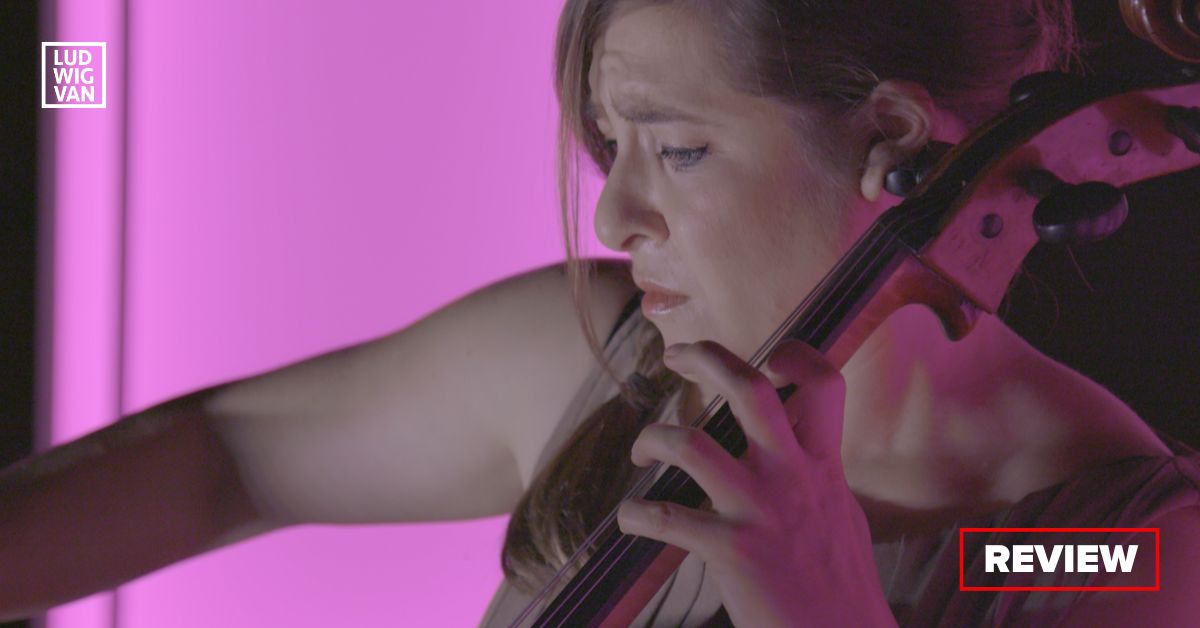
Credit Bach. Had the great J.S. not left posterity his masterful Cello Suites, the impulse to write solo music for this instrument would have been greatly diminished. And, of course, there would be no Fragments, this being the title given by Alisa Weilerstein to the pair of hourlong programs that premiered Saturday night under the auspices of the Royal Conservatory’s 21C Music Festival.
The basic idea was to alternate the seven movements of each Suite (counting the Menuets separately) with short commissioned works from living composers. A clever enough concept, but the American cellist went much further, dictating cinematically low lighting in Koerner Hall and engaging an artistic team to adorn the stage with boxlike sculptures illuminated in various ways from behind and above.
There was stage smoke at one point. Happily, the soloist, seated centrally under a spotlight and consulting a tablet, stayed put. But her most radical departure from convention was to perform the music unannounced and inform the listeners afterwards of what they had heard by passing out a leaflet. All this in the interest of suppressing our natural sense of time, place and narrative.
As a relatively linear thinker, to the extent that I think at all, I did not eagerly accept the invitation to submit to musical hypnosis. Perhaps part of the problem was the awareness that I should eventually have to report on what I heard in column inches. Note-taking was almost impossible (not to say antithetical to the ethos of the evening).
Playing of this calibre, however, has a way of transcending quotidian difficulties. Weilerstein has a warm and throaty tone, which she projects to perfection at all volumes. Vibrato was varied and governed by authentic expressive need. Intonation was impeccable. The Sarabande of the Suite No. 2 in D Minor (around which the second of the two “Fragments” was assembled) was as softly fine as it could be.
There was plenty of virtuosity on display in the Gigues and Courantes, and more aggressively in the commissioned pieces, which ranged in style from slash-and-burn (Ana Sokolovic in her Fragment II) to barely audible (Caroline Shaw in a minimal piece that included some vocalise). Another name-brand composer was Joan Tower, whose Untitled got Fragments I (structured around the Suite No. 1 in G Major) off to a solemn start.
Among the less famous contributors was Allison Loggins-Hull, whose edgy high-position writing made for a brisk contrast with the Sarabande of the Suite No. 1. Elsewhere, we heard tremolos, harmonics, strumming, plucking and chordal writing. Some extended techniques, yes, but mostly within the scope of reason and in a tonal harmonic context. Modernism is not what it used to be.
These Fragments are the first two of six, which will incorporate the work of 28 composers, including Bach. Weilerstein has chosen the participants for diversity with respect to “compositional approach, race, gender, age, nationality, and ethnic background.” None was expected to know the Bach movement a piece would precede or follow. The mix was Weilerstein’s. Undoubtedly she applied some compare-and-contrast criteria, even if randomness was part of the intended effect.
I arrived curious and left not quite convinced. Ignorance is not bliss. Knowing what is being performed and by whom it is written might not be essential to enjoyment, but full appreciation requires some context. How often have we heard music on the radio (back in the days when radio mattered) and listened through to the final bars to satisfy our desire to know its identity? Or left a concert wondering about that encore?
Not that there was much evidence of these reservations at the end of the evening. The crowd loved it. Whatever it was!
#LUDWIGVAN
Get the daily arts news straight to your inbox.